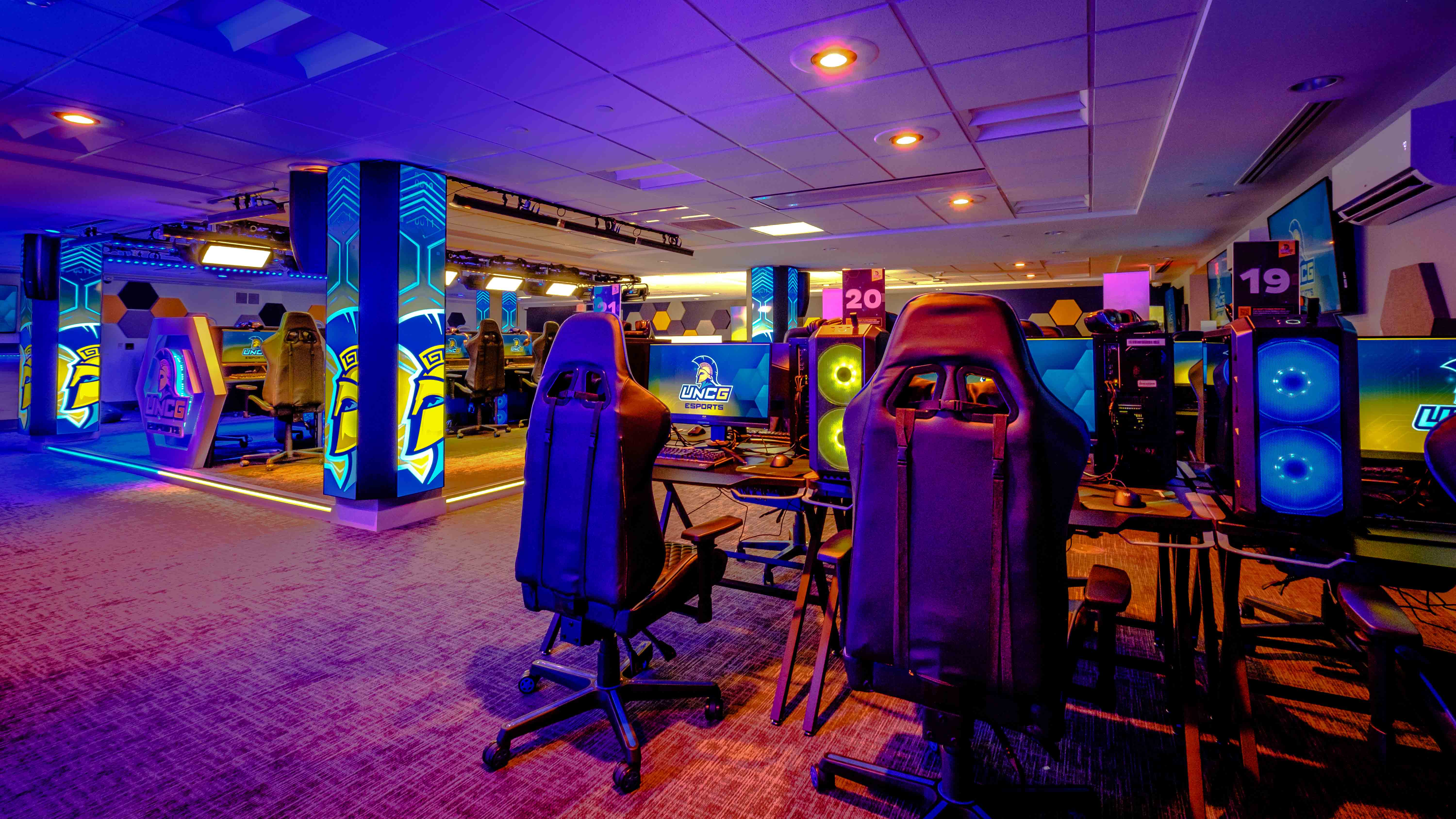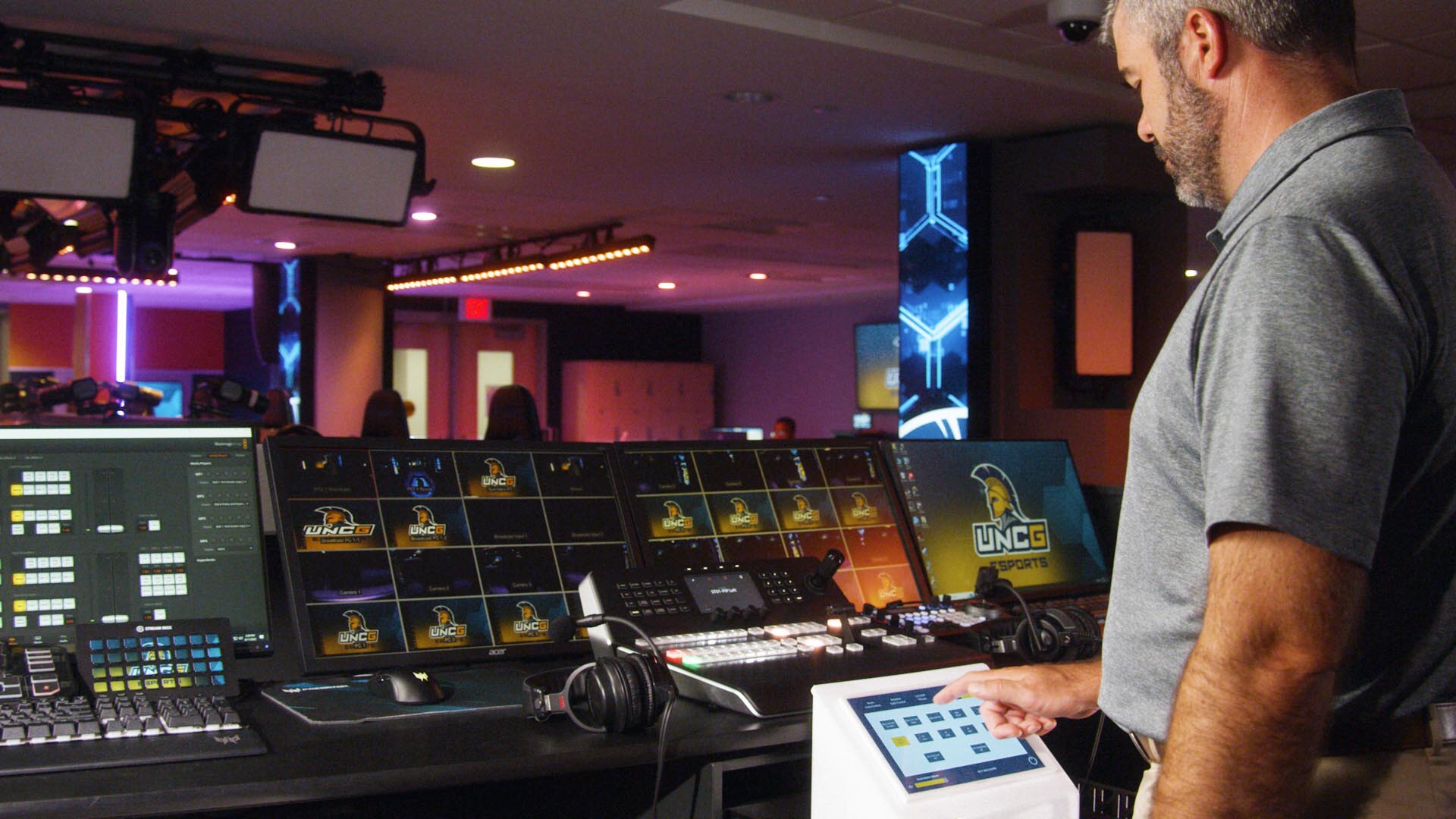
According to Bloomberg, the esports industry is bigger in revenue terms worldwide than the film and television industries combined. That’s put pressure on academia—and those who hold their purse strings—to address the issue, especially when film and television curricula are found at many colleges and universities.
[The Integration Guide to Esports]
While the University of North Carolina at Greensboro (UNCG) had a gaming and esports club, state legislators realized that esports was more than a game; it's a career path for which students need training. On that note, UNCG received $2.4 million in state funds for “the operating, equipment, technology, marketing and programming costs associated with establishing an esports facility on the campus.”

Horizon AVL designed the 3,300-square-foot UNCG Esports Arena, which opened in April 2022, with a high-level learning/gaming environment to engage students academically and socially, as well as for participating in league competitions. Students can now take a variety of esports digital certificate programs, those pursuing a bachelor’s degree in hospitality and tourism management can add an esports management concentration.
“Over two years ago, due to COVID—these installations typically take 6-8 months—we were brought in to develop the esports process and program,” said Joshua Kell, CEO at Horizon AVL. “UNCG knew they needed an esports space, but not how to get there. They reached out to the University of Delaware to find out who their esports integrator was. That was us, and that’s how we got the job.”
Under Control
For Horizon, collegiate esports is not like any other AV project. It could be a major, a minor, or another part of the curriculum, so the process is much broader than a standard AV system. What games are needed, what leagues, what are the industry standards?
[Tech Port Center: Esports Gaming at Its Core]
To control the esports arena, Horizon turned to Crestron Electronics with its DM NVX 4K60 HDR platform for AV-over-IP. “As an AV integrator, we can sell Crestron’s equipment,” Kell explained. “But the important thing is that Crestron wants us to be the ones to touch and program the system because we understand it, including the benefits of AV-over-IP and the almost zero latency that you get from Crestron’s DM NVX platform.”

It’s a sentiment echoed by John Hulen, director of channel marketing, education at Crestron Electronics, who finds Gigabit Ethernet to be the “sweet spot” for its flexibility, latency, cost, and point-to-multipoint ability. “DM NVX gives users less than a frame of latency with Gigabit Ethernet,” he said. “There’s 10 Gigabit Ethernet, and it’s got the best feature set of a ‘standard’ high-speed backbone. But you won’t see any perceptible difference, even when shoutcasting [commentating] and streaming. What you will see is a much more expensive pipe.”
At the UNCG Esports Arena, nothing comes between the gamer and their PC. Each PC, whether for competition or not, is directly connected with its peripherals.
“No AV manufacturer should interrupt the direct command for signals between devices, so everything we do is after that to avoid adding latency,” said Hulen. “We take it to the shoutcasters, the spectators, and coaches with almost zero latency.”
Gamers and Observers
Each of the 48 Esports Arena gaming stations (including 12 on the competition platform) can operate simultaneously, and are equipped with an Acer Predator PC with an AMD Ryzen 7 3700X CPU, 16GB of RAM, and an NVIDIA GeForce RTX 2060 Super GPU. Supporting the PCs are Acer Predator XB3 24.5-inch 144Hz HDR monitors, Acer Predator Aethon 100 wired keyboards, Acer Predator Cestus 310 wired mice, and Logitech G935 wireless headsets with team-specific audio channels on Discord. Plus, each of the 12 competition PCs has a Marshall CV380-CS compact camera mounted at the top of the monitor to capture the gamers during competition.

At the heart of the Esports Arena is the Crestron DM NVX 4K60 4:4:4 HDR platform for video routing and control, including DM-NVX-363C AV encoder/decoder cards with downmixing and Dante audio, DM-NVX-E30 AV encoder cards, and DM-NVX-D30 AV decoder cards. The "brains" of the platform is the CP4N 4-Series control system featuring an isolated control subnet that provides a Gigabit Ethernet LAN dedicated to Crestron devices. There’s also the TSW-1070 10.1-inch touch screen that provides a convenient way to control all aspects of the CP4N, including signal routing, audio volume, and lighting presets.

According to Larry Darling, classroom technology manager at UNCG, other support equipment includes displays that were specified to suit specific needs. Those range from a Sharp 86-inch monitor behind the shout (commentator) desk, LG 86-inch extended wide format monitors used to wrap the columns in the arena, and Sharp 60-inch monitors used in the console areas. Audio is routed through a BSS audio DSP and projected in the room through four JBL CBT 70JE-1 speakers and two PRX418S subwoofers. The production side uses a Blackmagic Design ATEM Constellation 8K to capture the cameras and competitors' PCs for live streaming.
“For the observation area outside the arena, we have four Vanguard Tungsten direct-view LED displays,” said Darling. “Each display measures roughly 6.5x6.5 feet and can be used for promotional purposes during the week, and as a means to expand the space for additional spectators during live events.”
Positive Impact on Campus
What does all that technology provide UNCG? The academic and competitive benefits are obvious, but Mike Ackerman, associate director, UNCG Department of Recreation and Wellness, adds another aspect, as his department has the role of managing the space.

“I had been following collegiate esports and more and more universities were taking on the initiative,” he said. “I was enthusiastic that UNCG would benefit by creating a physical space and academic connection for this really large field that is developing across the world.”
The Esports Arena has proven to have a positive impact on the socialization of students, moving them from isolated gaming in their room to a much more appropriate gaming experience. “This space allowed us to have a physical location to build a community, a place to compete, and allow us to engage the casual gamer with top-of-the-line equipment that they might not be able to afford. It’s all about social wellbeing,” Ackerman added, “a sense of belonging in higher education. We see the demographics in the arena mirroring the institution.”
The numbers speak to Ackerman’s point. Through GGLeagues software, students must swipe in to use the arena, with a monthly hourly usage cap. GGLeagues counted approximately 15,000 non-unique swipes in the arena’s best month. With a student enrollment of approximately 17,900, that’s impressive. Typically, GGLeagues records 220-240 swipes per day.
“It's just our first year, we don’t know what the future of streaming will look like," said Ackerman. "But Horizon really gave us what we needed and is designed for expansion. Plus, the Crestron platform is very user friendly, so the students who supervise the arena can’t get themselves into much trouble.”
[A Los Angeles Esports Arena Goes Global with Studio Technologies]
Perhaps Hulen put it best: “Esports is indicative of the kind of experience the 21st century student is looking for. The educational experience has changed so much more in the past decade than over the past few decades. It’s a brand-new learning curve for students that we never expected—they don’t want to go to class, but meet together online.”







